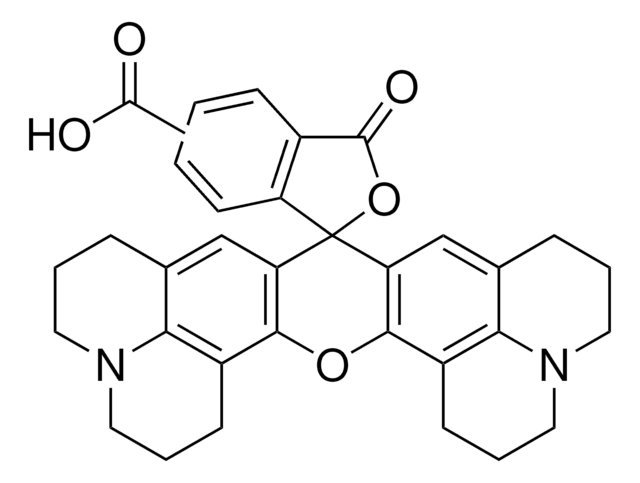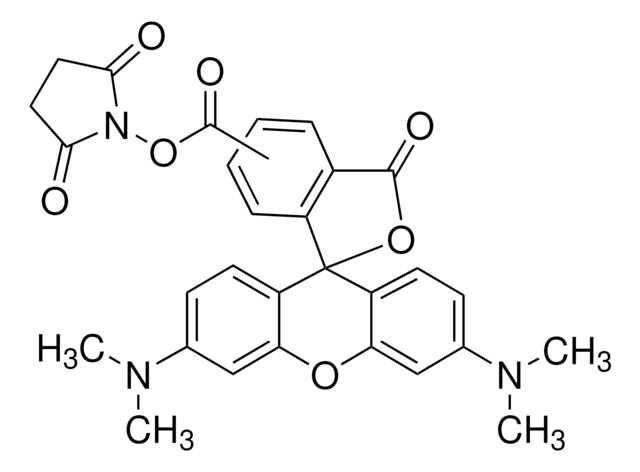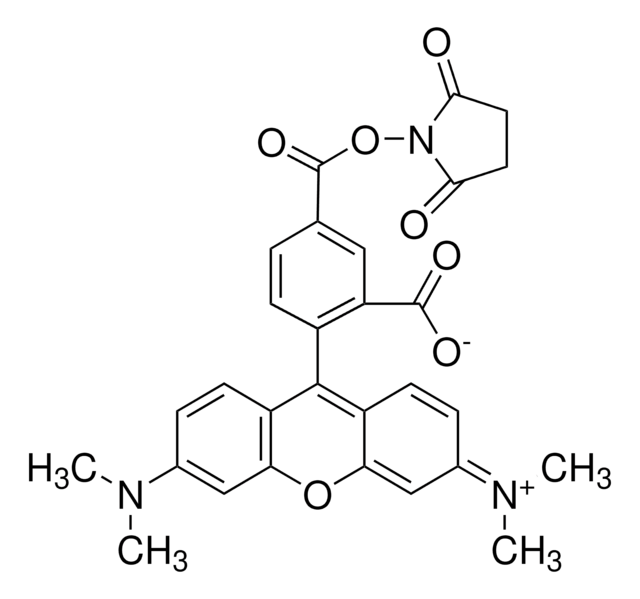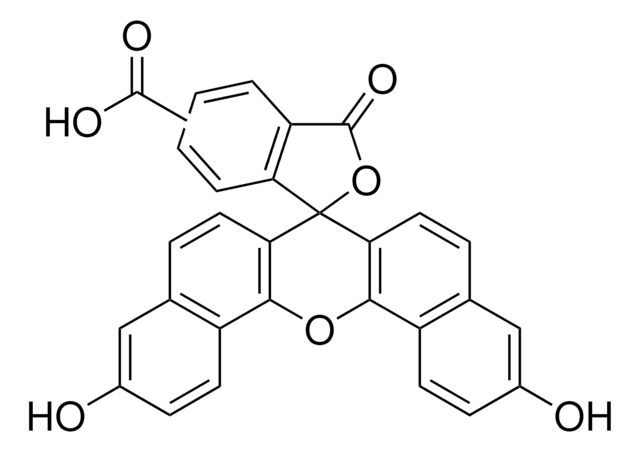41969
5-Carboxy-X-rhodamine N-succinimidyl ester
BioReagent, suitable for fluorescence
About This Item
Produits recommandés
Gamme de produits
BioReagent
Forme
powder
Solubilité
DMF: soluble
acetonitrile: soluble
Fluorescence
λex 575 nm; λem 600 nm in 0.1 M phosphate pH 7.0
Adéquation
suitable for fluorescence
Température de stockage
−20°C
Chaîne SMILES
[O-]C(=O)c1cc(ccc1-c2c3cc4CCCN5CCCc(c45)c3[o+]c6c7CCCN8CCCc(cc26)c78)C(=O)ON9C(=O)CCC9=O
InChI
1S/C37H33N3O7/c41-29-11-12-30(42)40(29)47-37(45)22-9-10-23(26(19-22)36(43)44)31-27-17-20-5-1-13-38-15-3-7-24(32(20)38)34(27)46-35-25-8-4-16-39-14-2-6-21(33(25)39)18-28(31)35/h9-10,17-19H,1-8,11-16H2
Clé InChI
BTTBJYLMDASSAS-UHFFFAOYSA-N
Application
Autres remarques
Mention d'avertissement
Warning
Mentions de danger
Conseils de prudence
Classification des risques
Eye Irrit. 2 - Skin Irrit. 2 - STOT SE 3
Organes cibles
Respiratory system
Code de la classe de stockage
11 - Combustible Solids
Classe de danger pour l'eau (WGK)
WGK 3
Point d'éclair (°F)
Not applicable
Point d'éclair (°C)
Not applicable
Équipement de protection individuelle
dust mask type N95 (US), Eyeshields, Gloves
Faites votre choix parmi les versions les plus récentes :
Déjà en possession de ce produit ?
Retrouvez la documentation relative aux produits que vous avez récemment achetés dans la Bibliothèque de documents.
Articles
Fluorescent Labeling of Peptides
Notre équipe de scientifiques dispose d'une expérience dans tous les secteurs de la recherche, notamment en sciences de la vie, science des matériaux, synthèse chimique, chromatographie, analyse et dans de nombreux autres domaines..
Contacter notre Service technique








